














Sweet 4-year-old Autumn Rose (232398) has been with us since the end of July, and we just can’t believe this sweet gal hasn’t been scooped up yet. Our staff and volunteers having nothing but great things to say about our voluptuous lady, and as much as we love snuggling up on her every day, we know what she really wants is a forever home.
Tipping the scales at nearly 145 pounds and recently diagnosed with hypothyroid disease, Autumn Rose is looking for a home that can keep her in tip-top shape and help her manage her weight.

A home with deaf dog experience would be amazing, since our big girl is also deaf.




Have room in your heart and home for this big ol’ girl? Be sure to visit her today!
Please send your application to the Lancaster Center for Animal Life-Saving at adoptlancaster@humanepa.org, or give the shelter a call at (717) 393-6551 to learn more.



In 1928, when he was involved in a legal tussle with Universal Pictures, Walt Disney lost the rights to his cartoon creation Oswald the Lucky Rabbit.
Disney then created a replacement cartoon figure: Mortimer Mouse. But Walt’s wife, Lillian, thought her husband would do better with the name Mickey Mouse instead. (Thank you, Lillian.)
The world’s favorite rodent, whose simple head is composed of one large and two smaller circles, became an animation superstar with 1928’s Steamboat Willie, the first such release with synchronized sound. (Disney himself provided Mickey’s voice.)
Mickey Mouse would in time be featured in over 130 of Walt’s films, including the starring role in 1940’s now-legendary Fantasia . In 1978, Mickey became the first animated character to earn a star on the Hollywood Walk of Fame.
This and much more are covered in the superlative Disney+ November streaming of Mickey: The Story of a Mouse. While some viewers may dismiss it as a 93-minute commercial for the corporation’s iconic animal, others will appreciate the little-known, behind-the-scenes tales of the Mickey saga.
Here longtime company animators discuss and display their work and explain various stages of the often-complex processes required to bring Mickey Mouse to his millions of fans.
One veteran artist in particular confesses, “It wasn’t just one continual success after success; it was stumble after stumble.” Another animator claims
that Mickey became so big that he became a reflection of who we are.
The Disney documentary explores the longtime global impact of Mickey Mouse over the course of nearly a century, how the blithe little guy accompanied us through the Depression and served as a propaganda device during World War II, even becoming an image of hope during the Holocaust.
Under the guidance of director Jeff Malmberg (Marwencol ), we see that the passage of time brought different versions of Mickey, as well as the sometimes-surprising societal shifts that he came to represent.
While the Disney Company has always concerned itself with protecting the images of its founder and his mega-organization, the documentary does admit — briefly — to making errors in judgment along the years, including Mickey being shown in blackface and offering negative depictions of Native Americans.
In Mickey: The Story of a Mouse, we also get a one-minute short feature (Mickey in a Minute) of our hero strolling down a hallway, reflecting on posters of his past films until he is suddenly consumed by a vortex and becomes the many images we’ve seen over the decades.
The examination of a true icon — fictional though he is — streams on Nov. 18.
Randal C. Hill enjoys getting sneak peeks of forthcoming movies from his home on the Oregon coast. He can be reached at wryterhill@msn.com.


Let’s be honest — everybody lies.
In fact, a survey of 2,000 U.S. adults by One Poll for Online Betting Guide found that people tell an average of four lies every day and suspect that other people lie to them six times daily.
When do people lie? Thirty percent say they lie when asked if they like what someone else is wearing, and 27% will lie if someone makes them a meal they don’t like.
Are you a convincing liar? The survey, which focused on poker, found that only about 24% of people believe they have a
good poker face, while 37% think they do a good job of misleading others. Only about 1 in 20 people say they have a bad poker face.
On the other hand, 53% of people in the survey believe they can spot when someone is lying to them, and just 8% say they’re poor at it.
On the whole, 42% of people surveyed said they feel they have a hard time concealing their true feelings, and 54% said they consider honesty very important. Assuming they’re telling the truth.
P.O. Box 8049, Lancaster, PA 17604
Phone (717) 285-1350
(610) 675-6240
Fax (717) 285-1360

Email address: info@onlinepub.com
Website address: www.onlinepub.com
Vice president and Managing Editor
Christianne Rupp
Editor, 50plus publications


Megan Joyce
Lauren Phillips
Senior Marketing Consultant

Joshua Binkley Events Manager
Kimberly Shaffer
ADMINISTRATION Business Manager
Elizabeth Duvall
Member of
Awards
50 plus Life is published by On-Line Publishers, Inc. and is distributed monthly among senior centers, retirement communities, banks, grocers, libraries and other outlets serving the senior community.
On-Line Publishers, Inc. will not knowingly accept or publish advertising which may be fraudulent or misleading in nature.


Views expressed in opinion stories, contributions, articles and letters are not necessarily the views of the publisher. The appearance of advertisements for products or services does not constitute an endorsement of the particular product or service. The publisher will not be responsible for mistakes in advertisements unless notified within five days of publication. On-Line Publishers, Inc. reserves the right to revise or reject any and all advertising. No part of this publication may be reproduced or reprinted without permission of On-Line Publishers, Inc.
We will not knowingly publish any advertisement or information not in compliance with the Federal Fair Housing Act, Pennsylvania State laws or other local laws.
“If I do write my memoirs, they would sizzle,” says Jan Swarr, with a laugh that is never far away as the story of her life tumbles from her in jubilant waves.
With 82 years of joyous living, she has many stories to tell — all connected by a love of music and dance that runs through the rich tapestry of her life like a delicate golden thread.

Her journey began in her hometown of Mason City, Iowa, where Swarr explains music was in the air as Mason City is also the birthplace of Meredith Willson, the awardwinning author of the 1957 Broadway musical The Music Man (later turned into the 1962 movie of the same name).
“I’m so glad I had a beautiful upbringing,” she says.
At college at St. Olaf’s — yes, the hometown of Betty White’s character in The Golden Girls Swarr joined the renowned St. Olaf Choir, yet found time to compete in the Miss Minneapolis contest.
“I won the talent competition but got a zero in the swimsuit competition,” she adds with a chuckle.
That her voice was clearly her best asset came to the fore again when she sang in nightclubs and even burlesque clubs during her time in Boston, where she studied at the New England Conservatory of Music.
Swarr remembers, “I sang in clubs around Revere [a neighborhood in Boston] and was even asked to sing at burlesque clubs. This was the tail end of the burlesque period, where Gypsy Rose Lee was the star as part of an evening of entertainment — these
were definitely not like the gentleman’s clubs of today.
“I was outraged when my manager asked me to perform at these venues, but he assured me, ‘A lady is a lady wherever you go.’ He was chewing me out, but that was the best advice I ever had.”
She found she enjoyed singing in the clubs, although “the girls in the show were making five times my salary — $500 per week, compared to my $125 per week — but I stuck with singing,” she notes with a smile.
Swarr was singing in a nightclub the day John Kennedy was shot on Nov. 22, 1963. Despite everyone’s shock, the performers followed the old show business motto and kept on performing.
“We learned to power through anything,” she says, explaining that the pace of club work could be grueling: “We worked two shows a night and three on Saturday.”
Swarr met her husband during her time at the Music Conservatory and found time to get married and raise a son.
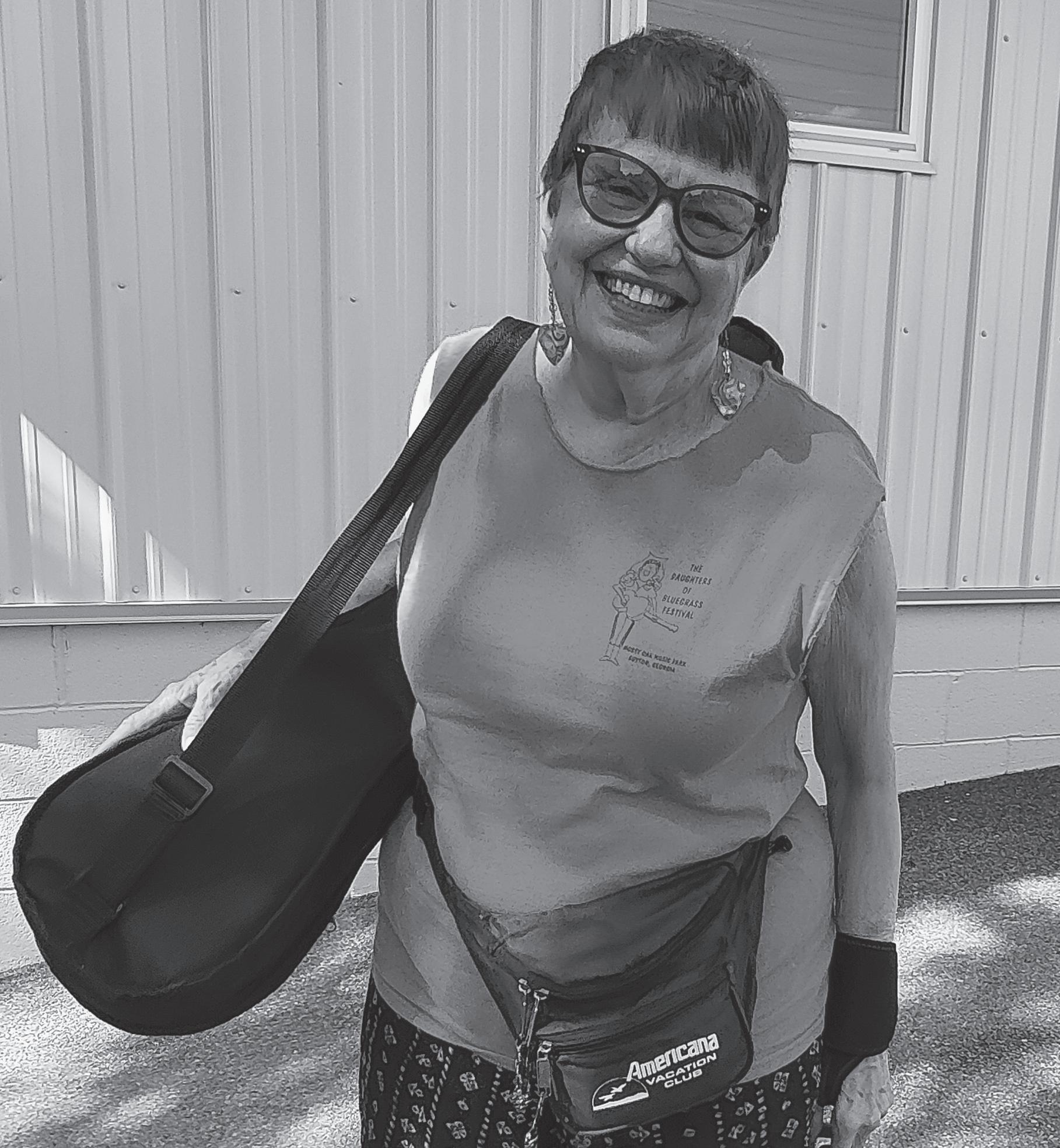
She never stopped performing at clubs, hotels, theaters, and even cruise ships, but also held a variety of more traditional jobs. Whether she sold insurance or entertained visitors from all over the world as a guide for the “Ride the Ducks” water tour in Philadelphia, she brought her love of people and entertainment to the table.
Currently, she continues working as an insurance representative.
“I’ll never retire,” says Swarr, true to one of her favorite mottos: “Do what you love … you’ll never work a day in your life.”
Despite her career joys, Swarr faced dark periods
in an abusive marriage that led her to join drug and alcohol addiction treatment programs.
“I’ll tell anyone about it, even my employers,” she says. “I am now over 40 years sober, with 35 years of no cigarettes. I want to live a life clean before God.

“Overcoming abuse and adversity forced me to make decisions one day at a time and accept life on life’s terms,” Swarr continues. “I live by the Serenity Prayer, my community, and my support groups. And it’s why I dance. Hard to stay mad when you’re trying to do a perfect time step.”
Now her goal is to give back to the community that supported her.
“I dedicate my life to encouraging others to take steps to overcome their own difficulties and to live without drugs and alcohol,” she says.
Swarr wrote a book of inspirational quotes she has passed on to her friends and acquaintances, especially women who face abuse and addiction. She is also a member of Kiwanis International, a nonprofit organization set up to support programs for children in the community.

“I wanted a tangible way to repay this community and love every second of it!” says Swarr.

In the mid-’60s, Swarr saw her father, a lifelong smoker, die of arteriosclerosis (hardening of the arteries). Her mother died of a brain tumor and heartbreak a few years later.
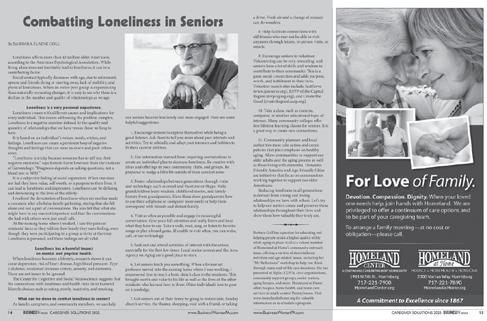
As a result, Swarr is especially committed to helping people stop smoking. She served as World Services Chair for a smoking cessation organization and hosted the organization’s World Conference in the Philadelphia region three times.
“Community service is in my DNA,” she says.
Swarr and her family moved to the Norristown area originally to be near her husband’s family. Although she divorced in 1970, she stayed in the area because of the tremendous community support she has received through the years.

Along with her work as Kiwanis Club volunteer, she was founder and chair of the Phoenixville Historic Candlelight Tour, a successful community showcase and fundraiser, until the program became another COVID casualty. This year, Swarr developed a community garden tour to fill in the gap.
As a result of her high-profile efforts, she has been recognized with numerous civic honors, from the 2009 Mayor’s Citizen Recognition Award and the Phoenixville Area Chamber of Commerce Award of Merit to serving as the 2012 Dogwood Parade Grand Marshal.
While she is immersed in community volunteering, music and performance continue to enliven her days.

At 73, she sang in the talent portion of the Ms. Pennsylvania Senior America competition. This year, Swarr sang and danced her way through a production of Guys and Dolls at the Forge Theater in Phoenixville through the month of June.
No slouch in keeping up with her fellow dancers even at 82, Swarr is quick to point out, “Our choreographer was president of the Rockettes Association.”
A showbiz trooper through and through, Swarr explains the show faced the
difficult challenge of numerous members becoming ill with COVID.

“It was a setback, but the show must go on!” she says.
“I’m so proud of how everyone powered through.”
With the show over, she has no intentions of slowing down.
“My next effort is to teach a community class in belly dance to help women love their bodies just as they are,” says Swarr.
At the end of the interview, Swarr tells one last story from her cruise ship days:
“Singers don’t reach true maturity in their voices until their ’50s and ’60s, when they’ve gone through life. When I was singing on cruise ships, our show’s magician said, ‘You have an unfinished symphony in your eyes.’ He was so right. I can now write the full score of my symphony.
“The life I have today is not the life I planned years ago, but I would not change it. As Barbra Streisand sang, ‘Good times and bum times, I’ve seen them all and, my dear, I’m still here!’ — thriving, happy, joyous, and free.”
 By Madhavi Vemireddy
By Madhavi Vemireddy
Being appointed a caregiver for an older adult can change one’s life completely, whether that person is a parent or you are not related.
The needs of aging adults exponentially increase as they grow older. Often, the person in charge of their care is simply an untrained family member who is given the role because of proximity and nothing more.
There’s a distinct learning curve to caregiving that must be navigated in a short time as the needs of the person you are caring for increase.
People in midlife often deal with being part of the “sandwich generation,” caring for children and aging parents simultaneously.
Stress and burnout are bound to occur amid a caregiver situation. Here are five tips to help a caregiver cope with the stress of this challenging situation.
Documenting needed information and organizing thoughts and needs can alleviate anxiety about the unknown.
3. Products for daily tasks. When you are thrust into a caregiver role without having experience in a professional sense, you may not be aware of the myriad products available to assist with the activities of daily living. Many of these items are available to rent through durable medical equipment (DME) companies or are covered by Medicare.
Products include medical alert buttons/necklaces, chair and bed alarms (to prevent falls), adaptive clothing, and more professional-level devices like Hoyer lifts and sit-tostand lifts.
Take advantage of training offered through DME companies that provide some of the more complicated products, such as lifts. Once a caregiver learns how to use these products appropriately, they can be invaluable (and save your back!).
1. Recognize the signs. It’s a well-known platitude that the first step to getting help is admitting you have a problem. The same holds for recognizing when you’ve reached burnout level.
Fatigue is the first “symptom.” To keep up with a grueling schedule, caregivers are often not allowing themselves enough sleep. This will eventually catch up to a person, leading to other health issues like depression, anxiety, and susceptibility to illnesses.
It can help caregivers to have an accountability partner they trust, someone who will remind them to get proper sleep and take care of themselves.
2. Create personalized action plans. Every caregiver’s journey is different. You may live with the person you care for. Maybe your loved one is in assisted living, and you are working in tandem with a care team.
Whatever your situation may be, a personalized action plan can help you stay organized and on task with decision making. Your personalized plan can include daily schedules, end-of-life plans, and the person’s wishes.
4. Resources for support. You cannot pour from an empty cup. Caregivers need support. That’s a given. Your local Aging and Disability Resource Center (ADRC) may offer support groups, classes, or access to helpful products.

Self-care is a necessity. Something as simple as allowing time for a midday nap or having a visiting nurse come in once a week to give the caregiver a day off can stave off burnout by allowing much-needed rest.
Organizations specific to your loved one’s illness can also offer support in the way of education and direction to assistance.
5. Set clear boundaries. It can be easy for a caregiver to feel taken advantage of, especially if they have siblings or other family members who are not participating in the caregiving as much as they maybe should be.
When it is clear that regular caregiving is necessary, clear boundaries need to be put in place from the outset. These include when the caregiver will be available and when they will not be, how much the caregiver will do in terms of care, and the scope of the job beyond the care of the loved one. Is the caregiver expected to clean the house? Grocery shop?
These are all talking points that need to be explicitly indicated. This can prevent resentment and anger later on.
Caregiving is a challenge many of us will face in the future, as our parents or other loved ones grow older and need more attention. Keeping a plan in place and allowing time to care for yourself will make the experience not fraught with anxiety and stress but with memories made and time spent together.
Madhavi Vemireddy is the COO and cofounder of CareTribe (caretribe.com). This digital platform
advanced analytics, personalized pathways, and human experts to help people get the support they need for their caregiving journey.














Dear Savvy Senior,
What kind of changes can Medicare beneficiaries expect to see in the Inflation Reduction Act that was recently signed into law? I’m enrolled in Original Medicare and have a Part D prescription drug plan but spent more than $6,000 out-of-pocket last year on medications alone.

Dear Paul, The climate, tax, and healthcare bill known as the Inflation Reduction Act, which was passed by Congress and signed into law by President Biden in August, includes significant improvements to the Medicare program that will kick in over the next few years.
These changes will lower prescription drug prices for millions of seniors by allowing the government to negotiate drug prices for the first time and capping
seniors’ out-of-pocket drug costs at $2,000 annually.
Some other changes will include free vaccinations, lower insulin costs, and expanded subsidies for lower-income seniors.
Here is a breakdown of the changes to expect in Medicare and when they will roll out.
2023: Starting this January, all vaccines covered under Medicare Part D, including the shingles vaccine, will be free to beneficiaries. And the skyrocketing cost of insulin will be capped at $35 per month. This will be a significant savings for the more than 3 million Medicare enrollees who currently use insulin to control their diabetes.
Also starting next year, drug makers will be penalized in the form of
About Us – The Lancaster County Office of Aging (LCOA) was established 45 years ago as a result of the passage of the Older Americans Act. This act directed states to develop a network of services and supports to help keep older adults healthy and independent.
The Pennsylvania Department of Aging was created to fulfill this mandate. In turn, a network of 52 Area Agencies on Aging (AAA) was established throughout the commonwealth to carry out this mission at the local level.
Funding for aging-related services is a combination of state and federal monies, with the Pennsylvania Lottery providing the major source of funding.
In Lancaster County, the AAA is part of
Listings with a screened background have additional information about their services in a display advertisement in this edition. This is not an all-inclusive list of agencies and providers. These advertisers are eager to provide additional information about their services.
BETHANy VILLAgE – THE OAk S 325 Wesley Drive • Mechanicsburg, PA 17055 717-766-0279 • www.bethanyvillage.org

Number of Beds: 69
Skilled Licensed Nursing: Yes Therapy: Speech, Occupational, Physical Rehabilitation Unit: Yes Short-Term Care: Yes Long-Term Care: Yes Alzheimer’s Unit: Yes Private Rooms: Yes Semi-Private Rooms: Yes 24-Hour Medical Care: Yes
Security System: Yes Staff Background Checks: Yes Internet Access: Yes Recreational Activities: Yes Scheduled Entertainment: Yes Medicare: Yes Medicaid: Yes Accreditations/Affiliations: Eagle, LeadingAge PA
Comments: Maplewood Assisted Living also available.
1901 North Fifth Street • Harrisburg, PA 17102-1598 717-221-7902 • www.homelandcenter.org
Number of Beds: 282
CLAREMONT NURSINg & REHABILITATION CENTER 1000 Claremont Road • Carlisle, PA 17013 (717) 243-2031 • www.claremontnursing.com

Secure Unit: Yes
Skilled Licensed Nursing: Yes Therapy: Speech, Occupational, Physical Rehabilitation Unit: Yes Short-Term Care: Yes Long-Term Care: Yes Alzheimer’s Unit: Yes Private Rooms: Yes Semi-Private Rooms: Yes 24-Hour Medical Care: Yes
Staff Background Checks: Yes Internet Access: Yes Recreational Activities: Yes Scheduled Entertainment: Yes Medicare: Yes Medicaid: Yes Accreditations/Affiliations: Best Nursing Homes 2021 – Newsweek
Comments: Featuring Transitions at Claremont, a dedicated, 39-bed, short-term rehab unit. Claremont provides quality skilled nursing and secured dementia care.

L ANdIS HOMES
1001 East Oregon Road • Lititz, PA 17543 717-569-3271 • www.landishomes.org
Number of Beds: 95
Skilled Licensed Nursing: Yes Therapy: Speech, Occupational, Physical Rehabilitation Unit: Yes Short-Term Care: Yes Long-Term Care: Yes Alzheimer’s Unit: Yes Private Rooms: Yes Semi-Private Rooms: Yes 24-Hour Medical Care: Yes
Security System: Yes
Staff Background Checks: Yes Internet Access: Yes Recreational Activities: Yes
Scheduled Entertainment: Yes Medicare: Yes Medicaid: Yes Accreditations/Affiliations: AAHSA, LeadingAge PA (PANPHA), NHPCO, PHN, HPNA Comments: A beautiful, full-service continuing care retirement community with a history of more than 150 years of exemplary care.
Number of Beds: 103 (13 short-term)
Skilled Licensed Nursing: Yes Therapy: Speech, Occupational, Physical Rehabilitation Unit: Yes Short-Term Care: Yes Long-Term Care: Yes Alzheimer’s Unit: Yes Private Rooms: Yes Semi-Private Rooms: Yes 24-Hour Medical Care: Yes
Security System: Yes
Staff Background Checks: Yes Internet Access: Yes Recreational Activities: Yes Scheduled Entertainment: Yes Medicare: Yes Medicaid: Yes Comments: Most Medicare Advantage plans accepted.
Nursing & Rehabilitation Centers Special
call Christianne Rupp at 717.285.8126 or email crupp@onlinepub.com
“rebates” that they would be forced to pay the government if they impose price increases that exceed general inflation.
2024: Cost sharing for catastrophic coverage in Part D will be eliminated. Under the current Part D benefit, once your out-of-pocket costs reach $7,050 in 2022, you enter “catastrophic” coverage but are still responsible for 5% of your prescription drug costs, with no limit.
But in 2024, people with Part D coverage will no longer be responsible for any out-of-pocket drug costs once they enter catastrophic coverage. This is significant for seniors who use expensive medications for conditions like cancer or multiple sclerosis.
Also starting in 2024 through 2029, Part D premiums will not be allowed to grow faster than 6% per year.
And for lower-income Medicare beneficiaries, eligibility for the Part D Low Income Subsidy (also known as Extra Help) will be expanded to 150% of the federal poverty level, from today’s limit of 135%.
This change will mean about 500,000 more seniors will qualify for financial assistance to help pay some or all of their prescription drug premiums and deductibles.
2025: One of the biggest cost-reduction measures for Medicare beneficiaries will begin in 2025 when out-of-pocket spending on Part D prescription drugs will be capped at $2,000 per year.
This will be a major savings for the more than 1.5 million beneficiaries who currently spend more than $2,000 out-of-pocket each year.
2026: When Medicare’s Part D program was enacted in 2003, negotiating lower drug prices was forbidden.
But because of the Inflation Reduction Act, starting in 2026 Medicare will be empowered to begin negotiating prices with drug companies for 10 of the most expensive drugs covered under Part D. In 2027 and 2028, 15 drugs would be eligible for negotiations, and in 2029 and subsequent years, 20 drugs would be chosen.
In addition to all the Medicare improvements, the Inflation Reduction Act also extends the Affordable Care Act premium subsidies for three years, which will help Americans gain coverage before they’re eligible for Medicare.
Send your senior questions to: Savvy Senior, P.O. Box 5443, Norman, OK 73070, or visit SavvySenior.org. Jim Miller is a contributor to the NBC Today show and author of The Savvy Senior book.

Wandering albatrosses are well named. They often soar hundreds of miles a day, low over the southern oceans that circle Antarctica, all day, every day, for a couple of weeks straight.
They do this with hardly a wingbeat and without landing, except on ocean swells to grab fish, squid, jellies, crustaceans, and other tidbits from the surface of the water.
Wandering albatrosses are large birds, and the largest of the 12 kinds of albatrosses, all of which inhabit the Southern Hemisphere.
Their bodies are 4 feet long and they have 10foot wingspans, which are the longest wingspans on Earth and are well adapted to sliding effortlessly on the wind. Their lengthy, narrow wings automatically lock in an outstretched, gliding position, allowing these albatrosses to sail for days with little effort and energy expended.


And wanderers weigh up to 28 pounds and have salt glands above their nostrils that expel excess salt after drinking saltwater.


Wonderful gliders on the wind, wandering albatrosses range farther than any other bird species on Earth. As they sail smoothly and effortlessly over the oceans around Antarctica, time after time, some of them get close to the southern tips of South America and Africa and the southern shores of Australia.
Recently fledged wandering albatrosses soar gracefully over the southern oceans, without coming down on land, for about six years. They only land on the ocean to get food and sleep. They even doze while on the wing!
Some young wanderers in flight circle



Antarctica three times a year, clocking about 75,000 miles! They seldom flap their wings in all that time, thus using little energy.
After their years of wandering over the oceans, young wandering albatrosses create new pairs ready to raise young on the Southern Hemisphere islands where they hatched. Wanderers pair for life and begin courting and nest-building activities in November, the start of summer weather in the Southern Hemisphere.

Wandering albatrosses nest in scattered groups on grassy hilltops. During the latter half of December, each female lays one egg in her mud-and-grass nursery. Each pair only raises one chick every two years.
Each pair of parents takes turns brooding the egg or small youngster and going to sea to get food. Chicks are fed regurgitated seafood. And when each progeny is large and strong, both parents go to sea to capture food to feed their young. Each immature bird fledges about nine months after hatching.

About 25,000 adult wandering albatrosses dwell in the Southern Hemisphere. Each bird can live up to 50 years, and most of that time they spend wandering above the southern oceans looking for food.
All life on Earth is miraculous and intriguing. And wandering albatrosses certainly add to that.
A lung cancer diagnosis can bring a host of emotions and questions, and “now what?” is one of the first. Assembling the right care team and creating a treatment plan designed uniquely for you is important to get you on the right track.
One of the first things to understand is that not all lung cancers are the same. Comprehensive biomarker testing can identify specific mutations (also known as genetic “drivers”) in your cancer called biomarkers. These mutations cause cancer to grow and spread in different ways.

Learn more about comprehensive biomarker testing and how it can help you uncover the appropriate treatment options available with this information from LUNGevity Foundation.


Comprehensive biomarker testing is used for people living with non-small cell lung cancer (NSCLC) to determine the presence of particular mutations or proteins in tumors. It is the first step in precision medicine and helps ensure a patient gets matched to the right treatment at the right time based on the cancer’s biomarker status.
This testing is a way for a healthcare team to gather as much information as possible about a patient’s unique NSCLC, ideally before treatment begins.
To be comprehensive, biomarker testing must test for all biomarkers that are recommended for your type and stage of NSCLC, based on the most current clinical guidelines.
The results of these tests help determine whether any of the U.S. Food and Drug Administration-approved NSCLC-targeted therapies or a particular immunotherapy drug are right for you as part of the treatment plan.
Sometimes a new treatment being tested through a clinical trial may be recommended based on which biomarker is found in the cancer.
Comprehensive biomarker testing is most often used to plan treatments for advanced-stage NSCLC.
Talk: The first step is to talk to your healthcare team about comprehensive biomarker testing so you don’t miss any potentially crucial information or treatment options. It is important to ask for comprehensive biomarker testing so your doctor tests for all recommended biomarkers.
You’ll also want to explore whether comprehensive biomarker testing is covered by your private insurance, Medicare, or Medicaid plan.
Test: Your medical team will test for all recommended biomarkers that could be causing your NSCLC to grow and spread. Testing results can take four weeks or longer.
Treat: Comprehensive biomarker testing results can help inform your individualized treatment plan and provide information necessary for your health care team to determine treatment options specific to your cancer type.
Tissue biopsies are the only way to confirm a diagnosis of lung cancer; they are also the standard way to detect driver mutations. There are many different
biopsy techniques that can be used to obtain the tumor tissue.
After the tumor tissue is collected, it is sent to a laboratory for testing. In comprehensive biomarker testing, driver mutations in multiple genes are tested for at the same time, rather than one mutation at a time, including not only the ones with approved treatments, but also other known driver mutations.
This is because some of the driver mutations without currently approved treatments may have treatments being tested now or in the near future. Testing positive for a biomarker that currently does not have an approved treatment may make you eligible for a future treatment option or an available clinical trial.
Comprehensive biomarker testing results are analyzed by a pathologist and recorded in a pathology report. It is a good idea to get a copy of your pathology report for your own information and have it available to show other doctors, if necessary.
Learn more and find additional resources at noonemissed.org. (Family Features)




First used in print in 1749, the term “housewife” has been used to denote a sewing kit commonly used by the military. The pocket sewing kit was also known as a “hussif” or “hussy” (also spelled “huswife”).
At a time when military uniforms were handmade and had to be provided by the recruit, a soldier’s gear included a sewing kit. This was typically made by his mother, his wife, or his sweetheart as a farewell gift. Often, they would personalize the sewing kit with embroidery.
Soldiers tucked away personal mementos as well as sewing items in the handy pockets. “Dog tags” with a soldier’s identification were not introduced until 1906. The sewing kit decorations and mementoes often helped the military identify a soldier lost in service.
The typical “hussif” included thread and wax for waterproofing it, darning wool for socks, a small scissors, needles, pins, extra buttons, a thimble, and other small mending
materials. These were necessary items.
As important, the skills to use them were vital because soldiers had to maintain their uniforms. Before the advent of safety pins (by Walter Hunt in 1847), the “housewife” was useful for mending uniforms and sewing on buttons, ranks, and awards.
The needle could also be used for removing splinters and, on occasion, sewing up a wound.
Some soldiers started recreational needlework. After the First World War, embroidery became a popular therapeutic occupation for wounded soldiers.
The “hussif” sewing kit was usually made from fabric scraps of linen, wool, and cotton and edged in twill tape. The early kits were made of two strips of fabric, one constructed on top of another. The approximate dimensions were 3-8 inches wide by 12-24


Dear Jonathan: I recently made the very sad but necessary decision to move my wife into a memory care unit at a local facility. Her dementia has progressed to a point where I can no longer care for her at home. Fortunately, I have the financial means to pay for her care in the nicest facility in town, where she will receive excellent care.
Now that my wife is no longer living here, there is no real reason for me to keep our home, so I would like to sell it and move into a condo. Since our home is titled in both of our names, what do I do when it comes time to close on the sale after I find a buyer? Can I sign all of the closing documents on my wife’s behalf since she no longer has the ability to do so? If not, what are my options?
Jonathan says: I am sorry to hear about your wife. It had to be very difficult for you to make the decision to transition her to a facility, as well as sell your marital home.
In answer to your question, you cannot sign the closing documents on your wife’s behalf without having legal authority to do so. That authority can come from one of two places:
A financial durable power of attorney – This allows the named agent to handle the disabled principal’s financial affairs when the principal is no longer able to handle those affairs on her own behalf.
inches long.
page
A series of pockets were then stitched across its width. It folded or rolled on itself and was tied closed with a string fitting neatly in the soldier’s pocket. It was always carried on their person.
From the mid-1800s to mid-1900s, a khaki roll-up pouch holding thread, buttons, scissors, needles, and a thimble became standard Army issue. Initially there was a generic Army pouch. Ultimately each branch of the U.S. military had its own sewing kit because the color of the uniforms and buttons varied.
The U.S. military “housewives” included dozens of styles of rolled fabric pouches as well as small canisters with spools of thread, needles, and a thimble in the cap. Box kits in military solid colors and camouflage were and remain available. Some were regulation issued. Sewing kits were also sold in nearly every Post Exchange, tailor shop, and dime store.
During World War I and World War II, women’s sewing groups and local chapters of the Red Cross made sewing kits to include in care packages for American soldiers. The Red Cross supplied these groups with the pattern, the contents, and a tag with the local chapter’s information.
According to one newspaper report, almost 50,000 kits were made by “hussif groups” between 1940 and 1944.
While sewing kits are still available today, they are not standard issue to
If your wife, while she still had legal capacity, executed a financial durable power of attorney naming you as her agent and that instrument included a provision giving the agent the ability to sell real estate titled in the principal’s name, then you could sign the closing documents as her agent with that financial durable power of attorney.

A conservatorship – If your wife failed to execute a financial durable power of attorney, then your only other option is to have yourself appointed as your wife’s conservator through your local probate court or the court that handles these types of matters.
Once you are appointed, you can act for your wife regarding all of her financial matters, including signing the closing documents for the sale of your home.
Utilizing one of these options is the only way you will be able to sign documents on your wife’s behalf and close on the sale of your home.
You should consult with an estate planning attorney well ahead of the closing so that you can make a determination as to which option is available to you so that you can proceed with the sale of your home without any delays or roadblocks. Good luck.

members of the military. This column is dedicated to our veterans and activeduty military personnel. Thank you for your service.
Doris Montag is a homespun historian and an exhibit curator who researches and displays historical collections of ordinary things, such as can openers, crochet, toy sewing machines, hand corn planters, powder compacts, egg cartons, and more. Contact or follow her on Facebook, HistoryofOrdinaryThings.


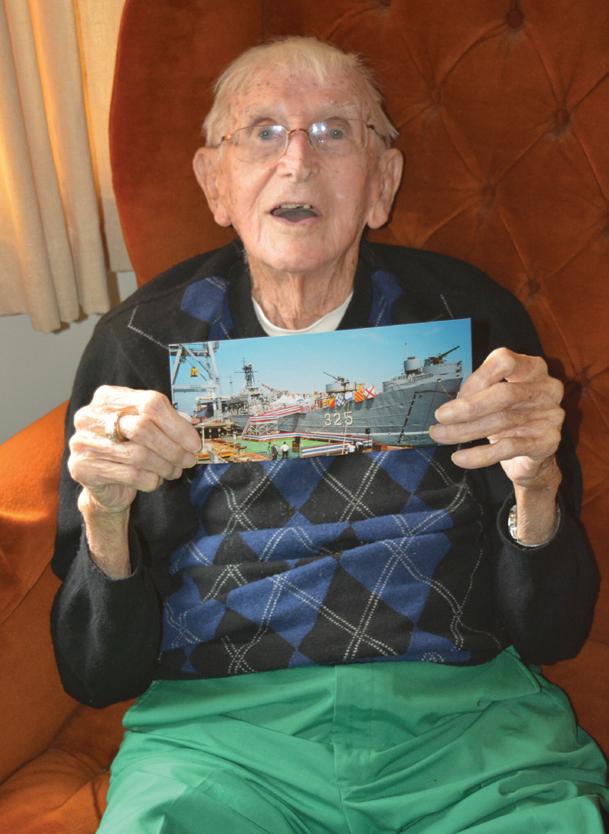
 By Barry Sparks
By Barry Sparks
Richard (Dick) Martin turns 100 on the 29th of this month. He has lived a full life as a World War II veteran, architect, worldwide traveler, amateur painter, and sculptor.
Martin, a York resident, enjoys sharing his experiences, particularly those about World War II.

He proudly enlisted in the Navy in September 1942, several months shy of his 20th birthday. Always interested in ships and planes, he signed up for the duration of the war, plus six months.
With a lot to learn, he traveled to the University of Missouri, Detroit, Norfolk, and New York City for education and training. He became a motor machinist’s

mate, 1st class, and was assigned to the USS LST-325
“The USS LST-325 was a tank landing ship,” he said. “It was a horrible-
looking ship, but it played a critical role in D-Day and World War II.”
The 328-foot-long ship operated with 13 officers and 104 enlisted men. Its massive cargo bay could handle up to 1,900 tons of gear or 20 Sherman tanks.
Before D-Day on June 6, 1944, Martin said crew members never knew where they would go. The USS LST-325 spent one year training in North Africa. Then it carried troops and supplies to Italy, landing on the shores of Sicily and Salerno during the invasion.
Afterward, the ship traveled to England, where it began pre-invasion drills.
“I was very excited to be part of the invasion,” said Martin.
In fact, he refused to go to the hospital after suffering shrapnel wounds in a

In 1959, Brooklynite Lenny Lipton was a 19-year-old sophomore at New York’s Cornell University.
One spring night, the engineering major planned to meet for dinner with his friend Lenny Edelstein, a campus pal who roomed with a folk-music-playing student named Peter Yarrow.
To kill a little time that afternoon, poetry-loving Lipton wandered over to the library at the Cornell Student Union — and consequently changed his fortune.
There he selected a volume of poems by humorist Ogden Nash. (Lipton had always been drawn to Nash’s droll, playful works.) One particular Nash creation caught Lipton’s eye. “The Tale of Custard the Dragon” was a 1936 tale that involved the end of childhood, something that had been on Lipton’s mind as of late.
He reshelved the book and headed for his friend’s house in the Collegetown area. As he strolled into town, Lipton created his own poem about a dragon, an imaginary and ageless creature named Puff, who lived for a while in the heart and mind of a young boy named Jackie Paper.
By the time Lipton reached the Edelstein-Yarrow house, his verses were fully formed, and he wanted to write them down before they faded from his mind.
Nobody was home, but the door was unlocked, so Lipton let himself in, rolled a sheet of paper into Yarrow’s typewriter, and typed furiously for three minutes to create “Puff the Magic Dragon.” Lipton then left his poem in Yarrow’s machine and promptly forgot about it.
Puff the magic dragon lived by the sea And frolicked in the autumn mist
In a land called Hana Lee
training exercise for fear of missing the invasion.
D-Day was the largest amphibious invasion in military history. Some 156,000 American, British, and Canadian forces landed on five beaches along a 50-mile stretch of France’s Normandy region.
The USS LST-325 was one of 6,939 ships and landing vessels that participated in D-Day. There were also 2,395 planes and 867 gliders.
“There were ships and planes everywhere,” recalled Martin. “It was an unbelievable sight.”
The ship and crew approached Omaha Beach with the mission of unloading 24 tanks. Enemy gunfire was heavy.
“I don’t know why, but I wasn’t scared,” offered Martin. “I think it’s because I was so young. I was proud to be part of the invasion, part of history.”
Martin confessed, however, he was afraid during an incident after D-Day. He manned a 20mm anti-aircraft gun when the ship next to the USS LST-325 was blown up.
“My knees were knocking,” he said.
During the war, Martin’s ship delivered troops, equipment, and tanks onshore. Then it filled its empty cargo with wounded American and Allied Forces soldiers and took them to hospitals.
When Yarrow saw the work later, it struck him that Lipton’s words could easily become a catchy folk ditty. Yarrow wrote it as “Puff (the Magic Dragon)” and, once he became a part of the supergroup Peter, Paul, and Mary, he began including the fantasy yarn in the fastrising trio’s act.
In early 1963, Yarrow made sure that Lipton received writer’s credit when the melancholy tune became the first million-selling single for the trio. Strangely, Lipton had forgotten all about his off-the-cuff creation about what would, in time, become the world’s most beloved dragon.
Lipton later blamed some Puff problems on gossipy New York journalist Dorothy Kilgallen, who in 1964 charged that Lipton’s ode contributed to the growing drug culture. Eventually rumors spread that Jackie Paper referred to rolling papers for marijuana cigarettes and that Puff meant taking a “puff” on a joint.
When asked about the real meaning, Lipton scoffed.
“The Puff story is really just a lot like Peter Pan. [It’s about the] loss of innocence and having to face an adult world … I find the fact that people interpret it as a drug song annoying. It would be insidious to propagandize about drugs in a song for little kids.”
In Peter, Paul, and Mary concerts, as Peter Yarrow picked the opening guitar notes of “Puff,” he would sometimes smile and explain, “This is a song about a dragon … It’s not about anything else … Just a dragon …”

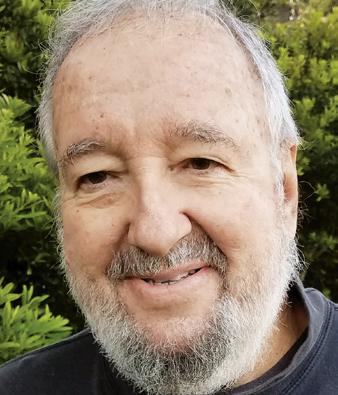
Although Randal C. Hill’s heart lives in the past, the rest of him resides in Bandon, Ore. He can be reached at wryterhill@msn.com.
On occasion, the USS LST-325 transported prisoners.
The ship made more than 40 trips across the English Channel, carrying thousands of men and pieces of equipment needed by troops. It continued to run supply trips between England and France before returning to the United States in May 1945.
Martin was discharged from the Navy on Dec. 23, 1945.
He had used his time at sea wisely. Interested in architecture when he enlisted, he took several architecture books with him. He studied them and produced hundreds of architectural drawings while on the ship.
Upon discharge, he showed them to a friend, who was an architect. The friend set up an appointment for him with another architect, who encouraged Martin to take a four-day test to become a registered architect.
He took the test and passed.
“My time in the Navy was equivalent to four years in college. My studying and drawing paid off,” said Martin, who was an architect for more than 70 years.
Martin attended ship reunions over the years to keep in touch with many of his crewmates. Today, the USS LST-325 is permanently docked in Evanston, Illinois, and open to the public.
“I was glad to serve my country,” said Martin. “Even though it was a dangerous time, and one of uncertainty, it was a great experience. I made a lot of lifelong friends. I often think about my time in the Navy.”
Q. My computer is 7 years old. Everything seems normal when it first starts up, but the longer I use it, the slower it runs. After an hour, the wait is awful. Restarting returns it to normal, but the slowdown repeats. Help!
A. This is a challenging problem to troubleshoot. Different issues may cause this behavior.

The instant a computer starts up, it begins to use three things: CPU, disk space, and memory. The computer is designed to keep these in balance, so the computer feels fast.
Your computer should have a built-in application that lets you peek under the hood. This crystal-ball-like application is called “Task Manager” on Windows and “Activity Monitor” on Mac.


These apps present lists and gauges that show how hard the computer is working each moment.
With a little practice — and maybe a YouTube video tutorial on the basics —

you can learn to make sense of the gauges.
Some are easy. If a process is always using 90% of the CPU, that is an obvious slowdown.
Some slowdowns are tougher to spot. For example, both disk space and memory are measured in gigabytes, but they are two different things entirely.

The path to fixing slowdowns is to learn what the crystal ball looks like after the computer starts, and compare it to how it looks after it slows down. That should identify the culprit, so you can make adjustments.
I wish I could be more specific, but every slowdown is unique. Good luck!
Q. What is the difference between the Do Not Disturb focus mode and the mute switch on my iPhone?
A. The official name of iPhone’s tiny mechanical switch (pushbuttons do not
Bob DeLaurentis please see SLOWDOWNS on facing page

The U.S. Department of Veterans Affairs Lebanon VA Medical Center announced that healthcare eligibility for certain Vietnam, Gulf War, and post-9/11 veterans was widely expanded on Oct. 1.
President Biden signed the PACT Act into law on Aug. 10, authorizing one of the largest healthcare and benefits expansions in VA history.
“This expansion will bring generations of new veterans into VA healthcare and increase the healthcare benefits of many more, which will result in the one outcome that matters most: better health outcomes for veterans,” Robert W. Callahan Jr., CEO and director, said.
Vietnam-era veterans who served in the following locations and time periods are eligible to apply for enrollment now:
• Service in the Republic of Vietnam between Jan. 9, 1962, and May 7, 1975
• Service in Thailand at any U.S. or Royal Thai base between Jan. 9, 1962, and June 30, 1976
• Service in Laos between Dec. 1, 1965, and Sept. 30, 1969
• Service in certain provinces in Cambodia between April 16, 1969, and April 30, 1969
• Service in Guam or American Samoa (or their territorial waters) between Jan. 9, 1962, and July 30, 1980
count) is the Ring/Silent switch. Its primary function is to keep the phone from ringing aloud. But it does more than that.
The switch is not connected to Do Not Disturb mode (the little half-moon icon). Do Not Disturb mode sends most calls directly to voicemail, silences notifications, and blacks out the screen.
When the Ring/Silent switch is positioned so the indicator underneath the toggle is red, the phone will not make noise except in very limited circumstances.
Alarms in the built-in Clock app ignore the switch. App developers can also request special permission to override the switch. This is rare, and I have yet to come upon an app that has it, but the override is intended for vital notifications, like medical alerts.
A few apps will continue working if it makes sense; for example, the music player will play music. But in general, if you see red on the switch, the phone will not make alert sounds.
A deep dive into Settings will provide more options, but, because some settings overlap and can conflict, it gets complicated quickly. Be sure to experiment if you try out custom settings.
The bottom line: The default settings on the iPhone work very well almost all the time. To silence the phone in quiet places, flip the Ring/Silent switch to red.
• Service in Johnston Atoll (or a ship that called there) between Jan. 1, 1972, and Sept. 30, 1977
Gulf War veterans who served on active duty in a theater of combat operations after the Persian Gulf War may now be eligible to enroll in VA healthcare.
This includes veterans who, in connection with service during such period, received the Armed Forces Expeditionary Medal, Service Specific Expeditionary Medal, Combat Era Specific Expeditionary Medal, Campaign Specific Medal, or any other combat theater award established by federal statute or executive order.
Post-9/11 veterans who did not previously enroll in VA healthcare now have a one-year window in which they may be eligible to enroll if they:
• Served on active duty in a theater of combat operations during a period of war after the Persian Gulf War
• Served in a combat against a hostile force during a period of hostilities after Nov. 11, 1998
• Were discharged or released between Sept. 11, 2001, and Oct. 1, 2013
Veterans can visit va.gov/PACT to get the latest information and updates. Veterans interested in enrolling in VA healthcare should call (717) 228-6000 to schedule an appointment.
A. Google Fi is a cellular carrier operated by Google. But the story only starts there. Google did not suddenly build a network of cell towers.
In a general sense, there are two types of networks in the United States: actual operators and virtual operators.
Companies like Verizon and AT&T build and maintain their own cell towers. They are actual network operators.
Google Fi is an example of a mobile virtual network operator. Virtual networks have been around a very long time, and they are “invisible” to most consumers. Virtual networks can be less expensive, but savings often come with limitations.
Because there are so many different networks, it is impossible to make universal recommendations. Buying decisions depend on the needs of each individual.
As for Google Fi itself, I am not especially impressed with its offerings compared to the plans from primary network operators like Verizon.
And Google, despite being an established technology brand, is a relative newcomer to direct end-user sales. I prefer to purchase tech products that are among the most important products each company offers.
However, Android is a key product for Google. That makes Google Fi important to watch.
Bob has been writing about technology for over three decades. He can be contacted at techtalk@bobdel.com.




Since coffee is an age-old hot drink, coffee grinders date back to the ninth century AD. As coffee served many people from diverse cultures worldwide, grinding coffee beans was essential.
Today, the machines for grinding coffee beans are highly collectible.

In Europe, the coffee grinder was patented by German inventor Friedrich Gottlob Keller in 1842. Based on this German coffee grinder, other coffee grinders followed suit.
American coffee grinders were introduced thanks to Maryland dentist Thomas Bruff, who understood that grinding coffee using different pressure points would have varying results. Like one’s teeth, a good coffee grinder should be able to grind coffee beans coarsely and finely.

For Bruff, numbers on the coffee grinder were used to select a finely or coarsely ground coffee bean. The higher the number set on the coffee grinder, the finer the resulting ground coffee beans. The lower the number, the more coarse the resulting ground coffee. Finely ground or coarsely ground coffee would taste differently from one another.
Bruff’s first coffee grinder was wall mounted. The wall-mounted coffee grinders would drop the ground beans into a storage container beneath the grinding wheel and crank, allowing gravity to aid in the process.
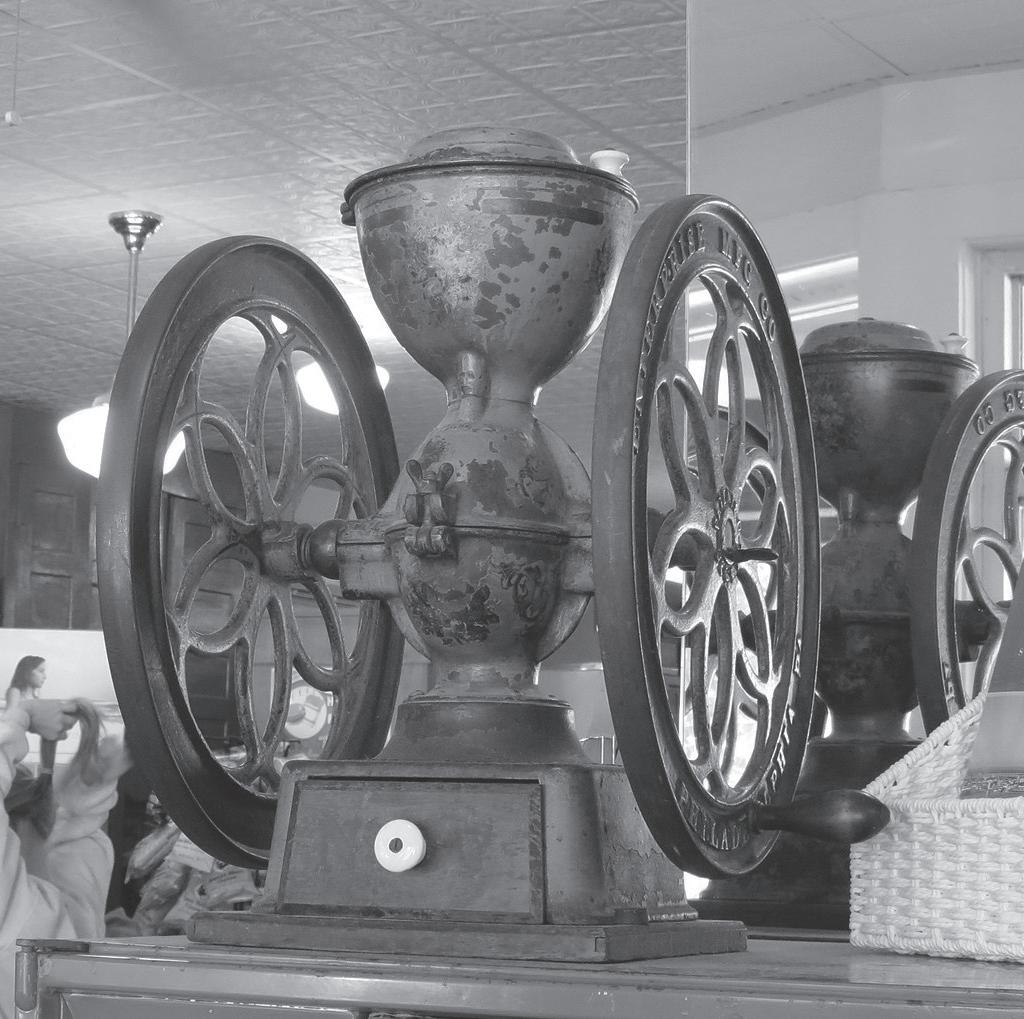
Sought-after antique coffee grinders date from the mid-19th century to the early 20th century and were made by various manufacturers in America and in Europe.
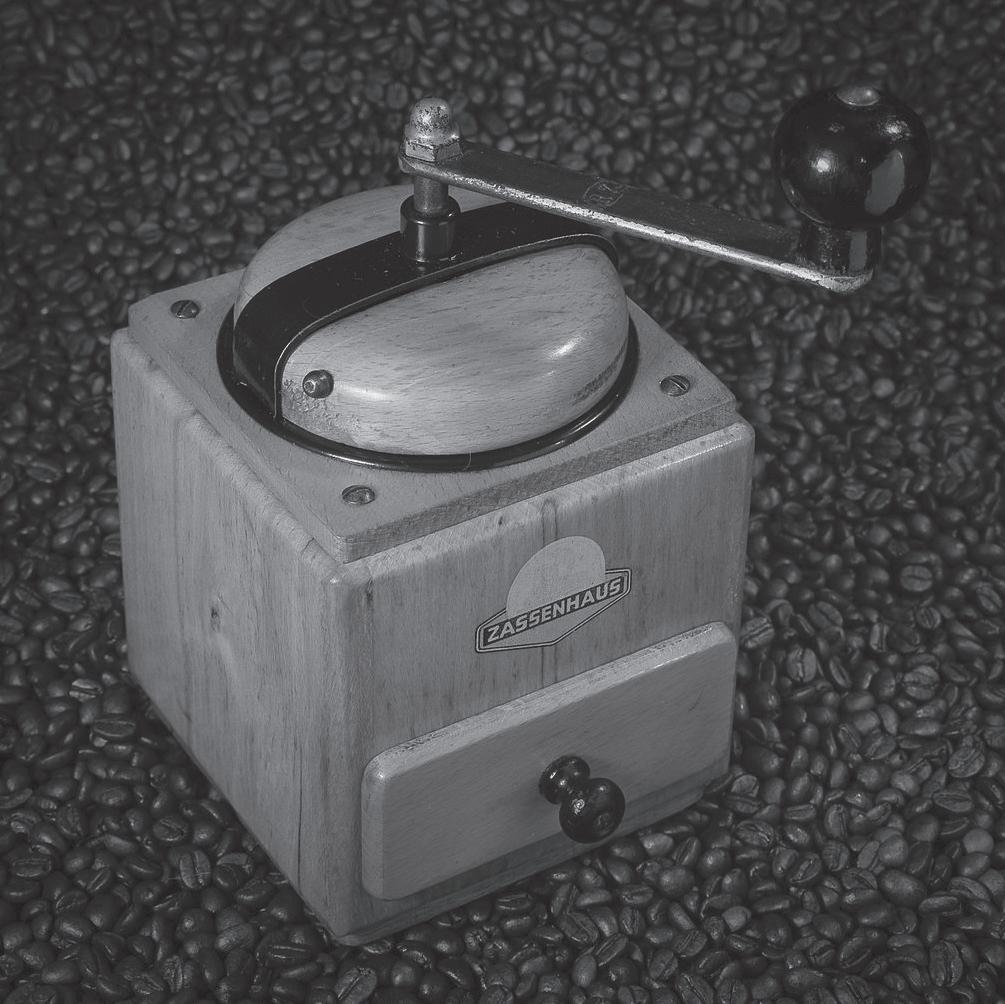
To identify valuable antique and vintage coffee grinders, one needs to know the various types, including single- and double-wheel models, wallmounted coffee grinders, top hand-crank box models, cast iron pedestal models, and large-scale floor models.
Wall-mounted coffee grinders were known for their convenience. Some were marketed by Charles Parker Company and other Connecticutbased firms of the 19th century. The tabletop coffee grinder models were used in private homes. Large floor-model grinders were typically used in general stores, institutions, and restaurants to grind large amounts of coffee.
Home coffee grinders were introduced in the mid-1890s and were used until circa 1940. The top hand-crank models featured a round metal top cast in metal with decorative elements and a wooden box and drawer at the bottom to catch the grounds.
Antique coffee grinders range in value from $50 to $1,000, depending on factors such as style, condition, type, materials, maker, design, and age. Some coffee grinders are worth more if they are made by a prestigious manufacturing company or are of a special type.
In America, these are the most prominent manufacturers of coffee grinders: Landers, Frary & Clark Coffee Mill, New Britain, Connecticut; Charles Parker Company, Meriden, Connecticut; Enterprise Manufacturing Company of Pennsylvania, Philadelphia, Pennsylvania; Wrightsville Hardware Company, Wrightsville, Pennsylvania; and Arcade Manufacturing Company, Freeport, Illinois.

photo credit: Ceridwen, licensed under CC-BY-SA-2.0- fR. Antique earthenware wall coffee grinder with a glass container, 19th -20th century.
Top coffee-grinder manufacturers in Europe include: Armin Trosser of Germany; PeDe (Peter Dienes) of Holland, the Netherlands; Kenrick and Sons of England; and Elma and MSF Company, both of Spain.
Collectors look for various styles and types of coffee grinders, and decoration impacts the appraised value. For example, some coffee grinders are decorated with flowers, geometric patterns, advertising information, or kitchen imagery.
Some decorations are reserved to the hoppers or canisters. These decorated holders are colored pressed glass, hand-painted wood boxes, transferware ceramic, and the list goes on. Kitchen motifs and other imagery to be found include flowers, fruits, the sun and moon, coffee cups, the alphabet, etc.
When seeking out antique or vintage coffee grinders, look for good condition, unique styles, working parts, original hardware, decorative motifs, and well-known brand names.
Ph.D. antiques appraiser, author, and award-winning TV personality Dr. Lori appears on The Curse of Oak Island on History channel. She gives appraisal value information at drloriv.com and youtube.com/drloriv or call (888) 431-1010.
Which buyers make up the Silver Economy?

• 962 million men and women over the age of 60
• A group with 11 times more wealth than millennials
• Persons with a life expectancy in the U.S. is about 78.87 years
• Persons who prefer in-person contact when possible
• A group that wants to age at home as long as reasonable

•
•
•
•
•
Why do you want to reach these buyers?
of many economic burdens
like to take care of themselves, be active, eat well, be fashionable, and have fun
more free time
are looking for products and services to help them age well
The not-so-obvious:
The obvious:
•
•
•
•
and leisure activities
products geared for seniors
• Security technology – mobile apps, sensors, wearable devices, smart clothing, etc.
• Pet care – pet sitting, walking, grooming, food, accessories, etc.
• Gardening/lawn services combined with snow removal
• Mobile esthetic and concierge services – hairstylist, manicurist, massage, facials
• Personal services – running errands, shopping
51% of people aged 52-70 spend fewer than 11 hours a week online. While businesses need an online presence, print adds power to a media campaign. Most boomers and seniors are open to and love classic media.
50plus Life—Covering Chester, Cumberland, Dauphin, Lancaster, Lebanon, and York counties—is an excellent venue!
Call to learn how we can help you reach our 150,000+ readers of 50plus Life! 717.285.1350 or email info@onlinepub.com

New Beginnings will perform a concert at 7 p.m. Saturday, Nov. 12, as part of the Westminster Music Series at Westminster Presbyterian Church, 2151 Oregon Pike, Lancaster.
Robin Leigh Massie, soprano, and Steven Condy, baritone, were married in 1992 after receiving degrees in voice/ opera performance from Yale University. They have established themselves with careers in opera and musical theater that span the globe.

Together with pianist Jamie Rankin, they will share classical and sacred music, including selections from their album, Be Thou My Vision
There is no cost to attend; a free-will offering will be taken.
Parking is abundant, and the church is handicapped accessible. For more information, call (717) 392-5909.
OLP Events, our events division, hosts 50 plus EXPOs, Women’s Expos, and the Jobs717 job fairs.
50 plus EXPOs are held annually in Chester, Cumberland, Dauphin, Lancaster (two), and York counties. Entrance to the event, health screenings, and seminars held throughout the day are free to visitors.
50
, an annual publication, is a guide to residences and healthcare options for mature adults in the Susquehanna Valley.

is an annual
throughout south-central Pennsylvania that includes products, services, and
book and resource
available in
It also contains a
of
The Women’s Expo is a one-day event featuring exhibitors and interactive fun that encompass many aspects of a woman’s life. Generally, Women’s Expos are held in Dauphin and Lancaster counties in the spring and in Lebanon, Lancaster, and Cumberland counties in the fall. The York County Women’s Expo will debut in spring 2023.
At the Jobs717 job fairs, jobseekers and employers can connect oneon-one to discuss open positions in a broad range of industries.
Dad used to pride himself on being handy. He could make anything, imagine anything, fix anything. He was handy, from tools to toys and kitchens to kids. But last week, Dad got lost on his way home from the grocery store, a trip he’s made once a week for 30 years, and it scared you both.
You might imagine what’s coming; find Living in the Moment by Elizabeth Landsverk, M.D., with Heather Millar, and be prepared for it.
So you noticed some memory or cognitive issues, and Dad’s not himself lately. How do you know if this new behavior is eccentricity or early dementia? Is this a normal sign of aging, or is it outside of normal?
What kind of dementia might he suffer from, and to what degree? You’ll want to get an official diagnosis, so you know what to do in the future, and why.
The first thing to know about what Dad’s going through is that dementia doesn’t mean “it’s all over.” There’s still plenty of life ahead for you both, perhaps for many years to come.
Next, remember that your loved one isn’t “trying to be difficult.” Their wild, out-of-theordinary behavior can’t be helped, and the disease is “so uncertain, so uneven.”
There are many possible ways to deal with forgetfulness, frustration, anger, and acting out, and there are things to avoid. Says Landsverk, solutions can sometimes be pleasant, even delightful.
Living in the Moment: Overcoming Challenges and Finding Moments of Joy in Alzheimer’s Disease and Other Dementias

By Elizabeth Landsverk, M.D., with Heather Millar c. 2022, Citadel 288 pages
Because Alzheimer’s and dementia cannot be cured, have a plan in place for your loved one’s care, but review it often. Things will change as time and the disease progress, so be willing to look at the bigger picture. That includes thinking about end-of-life issues, power


of attorney papers, and legal and financial protections for the long term.
Watch for scams; there are too many people who prey on our vulnerable seniors. Encourage physical activity, a good diet, and as much autonomy as currently possible. Learn how to craft a workaround for the easier-to-deal-with issues. And remember that “it takes a village to care for an elder with dementia” and “you are not alone.”

The sand is not your friend.
It’s certainly not where you want to stick your head when a loved one shows signs of dementia, because that life’s not a beach. No, it’s manageable, and Living in the Moment can help.
Though it’s perhaps not as thorough or comprehensible as you may want later, author Landsverk (with author Millar) says in her introduction that she wanted this book to be easy to use.
She succeeded, with a broad overview of the basics, things to know now, medicines that will and won’t work, problems to watch out for, and what to ready yourself for in the future. The case studies inside this book are strong and are scary enough to spur quick action, and they’re balanced with quiet paragraphs of comfort.
This book is great for caregivers, but it’s also an essential read for anyone who’s any way related to a dementia patient. Find Living in the Moment and keep it handy.
The Bookworm is Terri Schlichenmeyer. Terri has been reading since she was 3 years old, and she never goes anywhere without a book. She lives on a hill in Wisconsin with two dogs and 14,000 books.



On Nov. 26, 1922, British archeologist Howard Carter discovered the long-buried Egyptian tomb of King Tut. The tomb had been sealed for more than 3,000 years.
On the 100th anniversary of Carter’s discovery, Americans are recalling the legend and long-lasting commercial power of King Tut in library and museum exhibits, TV programs, books, films, and even comedian Steve Martin’s zany 1978 hit song “King Tut.” Carter’s discovery of King Tut’s tomb led to far greater discoveries within the tomb: the mummy of King Tut with a burial mask made of beaten gold, 21 ¼ inches from top to bottom, and weighing 22.5 pounds.

A popular belief of the era was that an ancient Egyptian curse would befall those who entered King Tut’s tomb. While several people who entered the tomb died unusual deaths shortly after they entered it, Carter, who discovered the tomb, did not believe in the curse.
“All sane people should dismiss such inventions with contempt,” he said.

Carter died at age 64 in 1939.
King Tut’s curse gave way to chills galore in novels, magazines, lectures, and stage shows. Ten years after King Tut’s discovery, Hollywood got in on the act.

The author with Sara Karloff, daughter of actor Boris Karloff, discussing her father’s role as The Mummy at the 2022 Midsummer Scream Horror and Halloween Convention, Long Beach, Calif.

Universal Studios hit boxoffice gold in 1931 with release of the first talking versions of Dracula with Bela Lugosi and Frankenstein with Boris Karloff.

Both actors were of European ancestry. Karloff’s father was British and his mother Indian. Karloff acted under heavy makeup in Frankenstein; his makeup would be even heavier for his role in 1932’s The Mummy.
The 10th anniversary of the discovery of King Tut’s tomb was very much on the minds of Universal Studios executives in 1932. With Karloff being of Anglo-Indian heritage, studio executives determined he would be perfect for the role of a 3,000-year-old mummy.
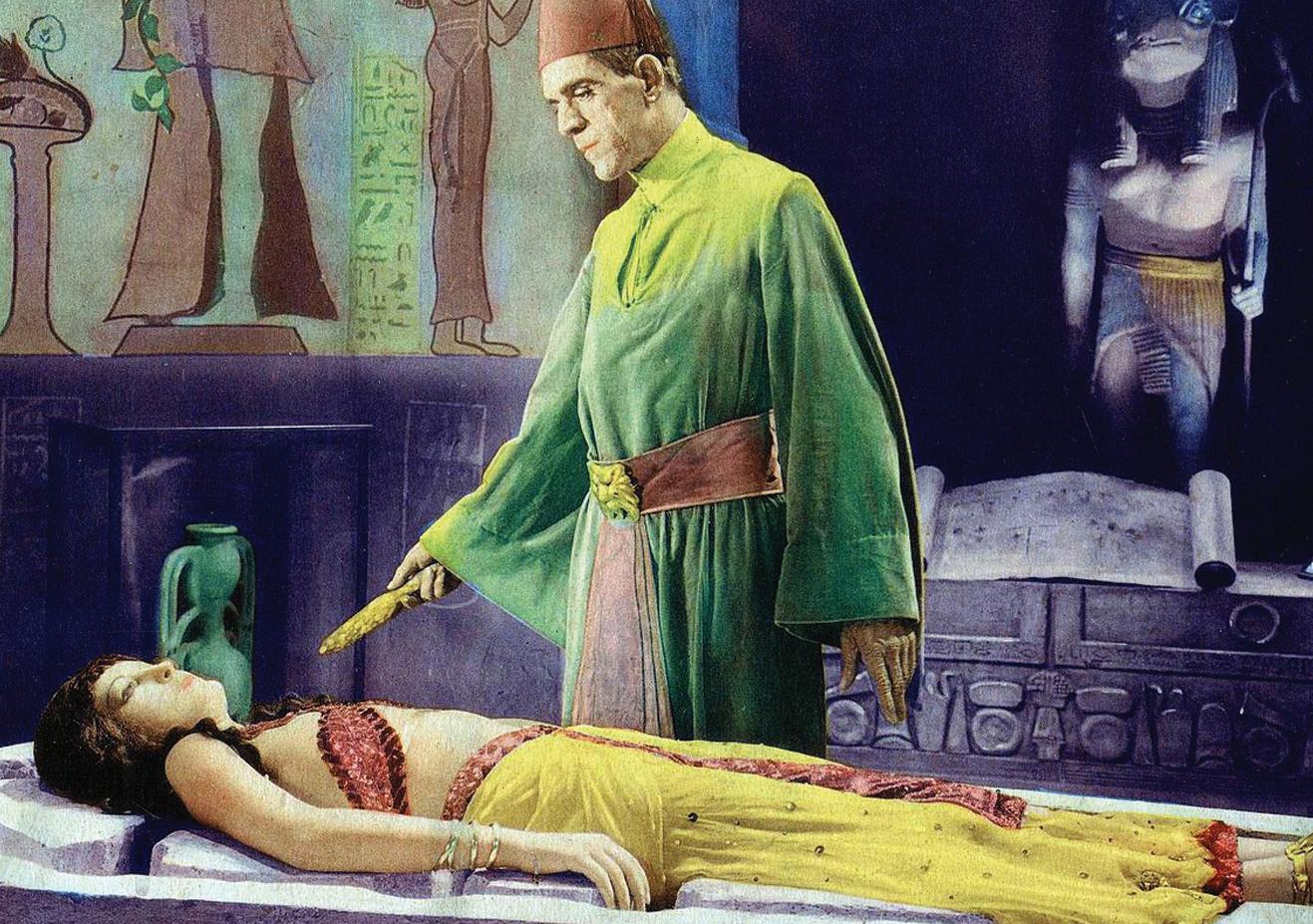
Universal’s expert makeup artists used yards of linen, gauze, caked clay, and Fuller’s earth (a feldspar derivate used to create an eerie coloring effect) to transform Karloff into an ancient mummy.
In the film, Karloff plays Im-ho-tep, a high priest of the Temple of the Sun. After his lover dies, Im-ho-tep is arrested for attempting to raise her from the dead, an unholy act. His punishment is to be buried alive.
The mummy of Im-ho-tep is discovered 3,000 years later by British
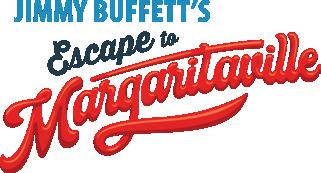




e P e r
ct Stockin
A S O
archaeologists. As one of the archeologists reads aloud a transcription from an ancient scroll buried with Im-ho-tep, the mummy is awakened. It walks away.
Ardeth Bey, the mummy of Imho-tep, seeks the scroll from the archaeologists. While discussing it with them, Bey meets a young British woman he believes is the reincarnation of his ancient lover. He seeks to make her a mummy like himself.
The Mummy was released in December 1932. Despite recent remakes, the 1932 film remains popular with audiences and critics due to its “stunning visual effects” and a masterful performance by Boris Karloff, who critics said was perfect for the role.
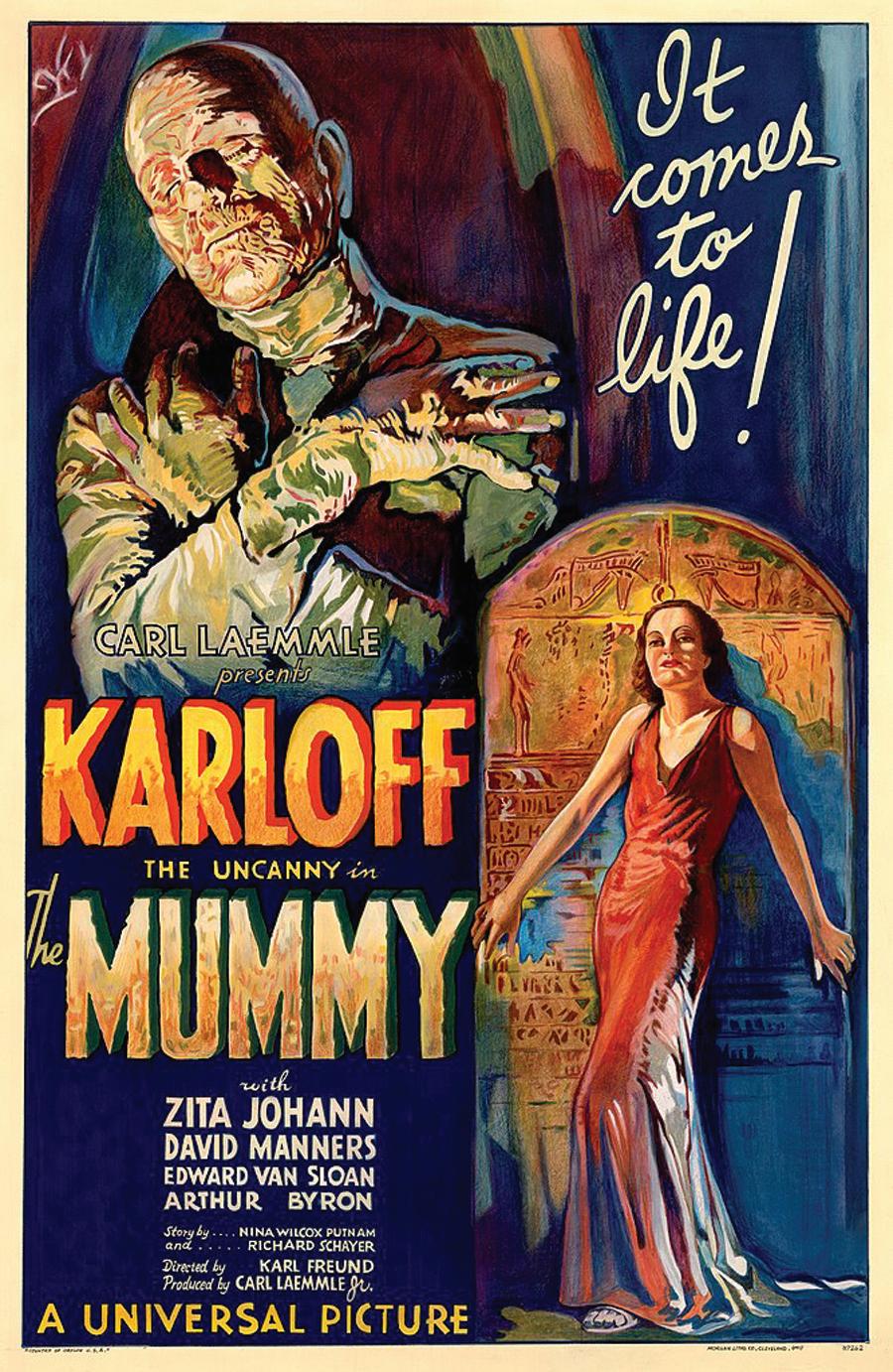
Universal’s 1932 The Mummy may have helped popularize the idea of a curse of the pharaoh, or King Tut’s curse. Karloff’s ominous makeup no doubt also popularized and perpetuated the curse myth.
On the 100th anniversary of the discovery of King Tut’s tomb and the 90th anniversary of Boris Karloff’s The Mummy, read more about the historical event and view, if you dare, the film. To paraphrase Carter, “All sane moviegoers should entertain Karloff’s version of The Mummy with respect.”
James Patterson is a Washington-D.C.-based writer and speaker.


Professionally managed by


Don’t delay your breast cancer screening.
Mammograms find breast cancer early, when most treatable. That’s why an annual mammogram is an important step in keeping you well. And our 3D technology provides our expert radiologists with the most detailed views of the breast, leading to improved detection rates and greater peace of mind.
We o er mammograms at eight locations, including the Suzanne H. Arnold Center for Breast Health, as well as individualized and coordinated care at the Ann B. Barshinger Cancer Institute should you need it.